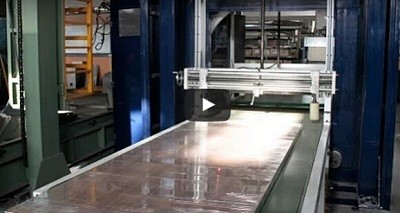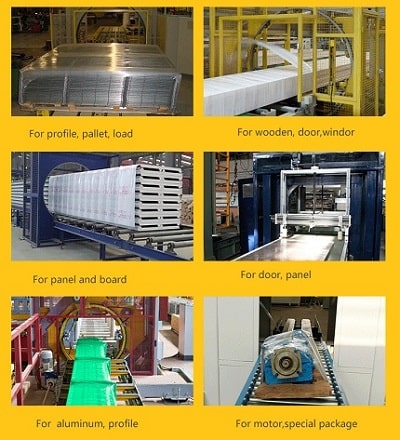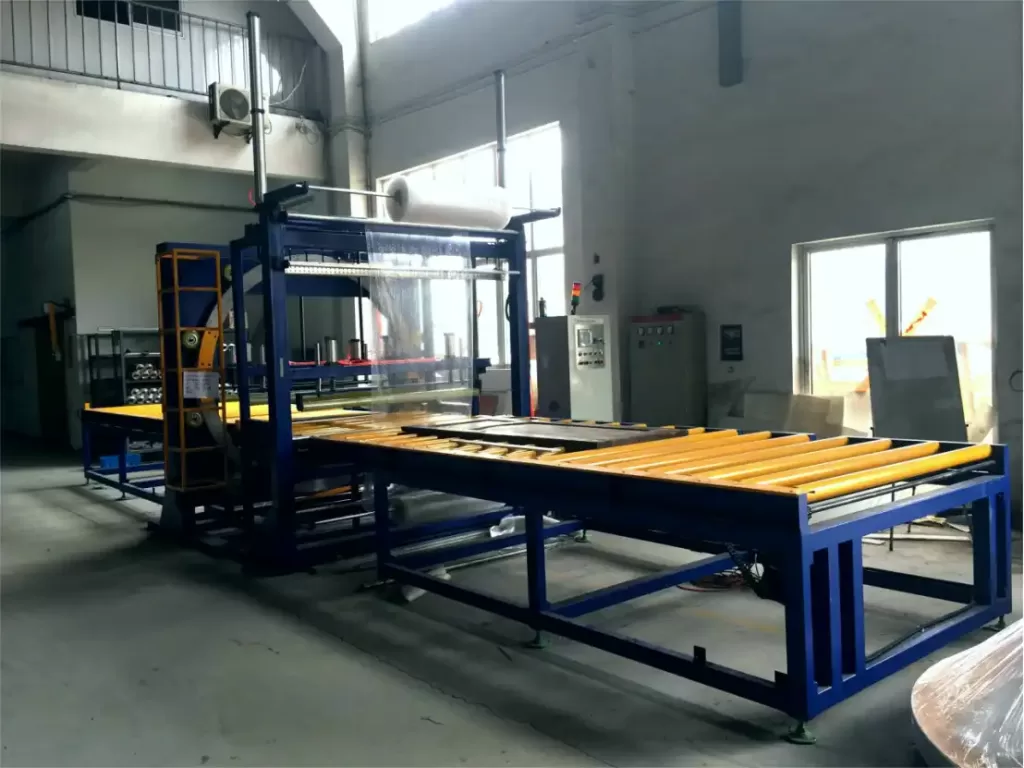Understanding Horizontal Orbital Stretch Wrappers for Specialized Packaging Needs
Horizontal orbital stretch wrappers represent a vital category of packaging machinery, specifically engineered to secure long, bulky, or irregularly shaped products that are difficult or impossible to wrap using traditional turntable or rotary arm systems. Unlike vertical wrappers that rotate the pallet or a film carriage around a stationary load, horizontal orbital wrappers pass the product through a rotating ring carrying the stretch film. This method is essential for applications in industries like building materials, furniture, textiles, and metal fabrication.

How Horizontal Orbital Stretch Wrappers Work
The core components of a typical horizontal orbital stretch wrapper include:
- Infeed and Outfeed Conveyors: These transport the product horizontally into and out of the wrapping station. They are often powered rollers or belts designed to handle the specific weight and dimensions of the products.
- Rotating Ring: A vertical ring holds the stretch film roll and dispensing system (film carriage). As the product moves horizontally through the center of the ring, the ring rotates around it, applying the stretch film.
- Film Carriage: Mounted on the ring, this mechanism includes the film roll, pre-stretch system (if applicable), and film cutting/clamping devices.
- Pressing Devices (Optional): Pneumatic or mechanical top and side presses may be used to stabilize the load during wrapping, especially for bundles or loose items.
Key Applications and Advantages
Horizontal orbital wrappers excel where other methods fall short. Their unique configuration makes them ideal for:
- Long Products: Pipes, timber, extrusions (aluminum, plastic), bundled rods, textiles rolls, and lumber are prime candidates.
- Bulky or Awkward Shapes: Items like doors, windows, furniture components, and assembled kits can be securely wrapped.
- Products Requiring Face Wrapping: Certain components cannot be easily rotated or stood on end. For instance, items that need to remain flat on their "face" during packaging benefit greatly from a horizontal wrapping approach. The horizontal conveyor system supports the product while the ring applies film around its perimeter.
- Integration into Production Lines: These machines can be seamlessly integrated between manufacturing processes, providing immediate protection and unitization.
Video demonstrating a horizontal orbital wrapping process.
Considerations When Selecting a Horizontal Wrapper
Choosing the right orbital wrapping machine requires careful consideration of several factors:
- Product Dimensions: The machine's ring diameter must be large enough to accommodate the maximum cross-section (width and height) of the product. Machines can often be specified or adjusted to handle diverse product sizes. For example, configurations might handle components with widths varying from 150mm to 260mm and outside diameters (OD) ranging from 300mm to 600mm. Always verify the maximum and minimum dimensions the machine can process.
- Throughput Requirements: Wrapping speed (ring RPM) and conveyor speed determine the overall packaging rate (products per hour).
- Film Specifications: Consider the type, gauge, and pre-stretch capabilities required for effective load containment.
- Level of Automation: Options range from semi-automatic (requiring manual start/stop and film attachment/cutting) to fully automatic systems with integrated conveyors, safety features, and automatic film handling.
- Load Stability Features: Evaluate if top or side presses are needed to keep the product stable during the wrapping cycle.

Detail of a horizontal orbital wrapping machine.
Benefits of Horizontal Orbital Wrapping
Implementing horizontal orbital stretch wrap equipment offers significant advantages:
- Enhanced Product Protection: Provides a tight, secure wrap against dust, moisture, and scratches during transit and storage.
- Improved Load Stability: Unitizes bundles or loose items, preventing shifting and damage.
- Increased Efficiency: Automates the wrapping process, reducing manual labor and increasing packaging speed.
- Versatility: Capable of handling a wide range of product shapes and sizes that are unsuitable for other wrapping methods.
- Cost Savings: Reduces packaging material consumption compared to manual methods or crates, and minimizes product damage costs.

horizontal oribital bubble film wrapper Conclusion
Horizontal orbital stretch wrappers provide an effective and efficient solution for packaging long, bulky, or challenging product profiles. By passing the product horizontally through a rotating film ring, these machines address specific needs, such as wrapping items on their face or handling components that cannot be vertically rotated. When selected based on specific application requirements like product dimensions and throughput needs, they become invaluable assets in streamlining packaging operations and ensuring product integrity.
